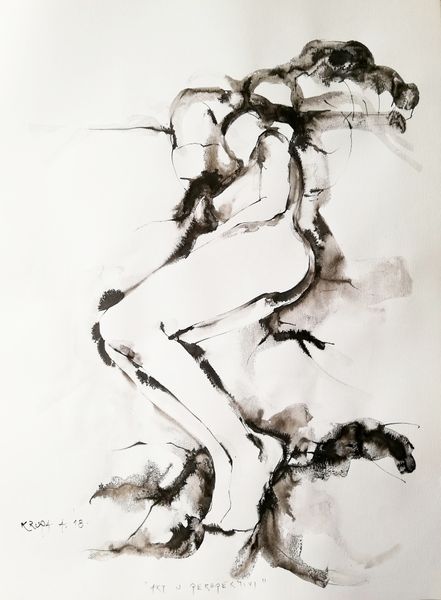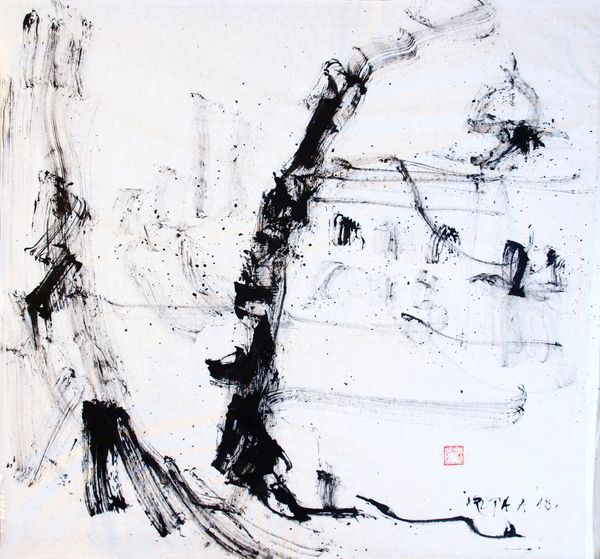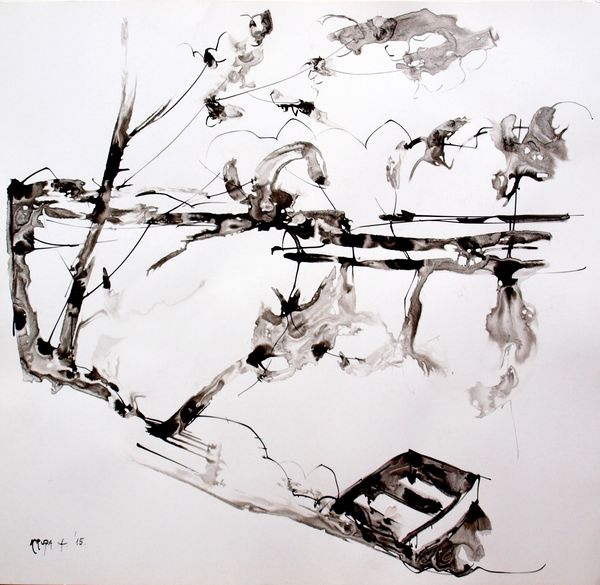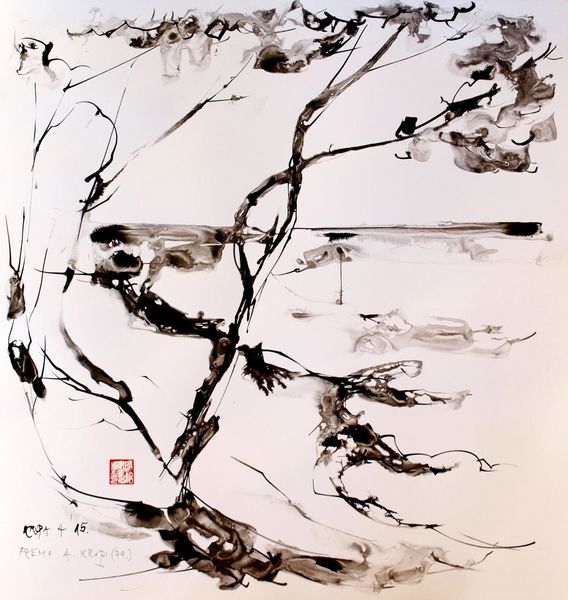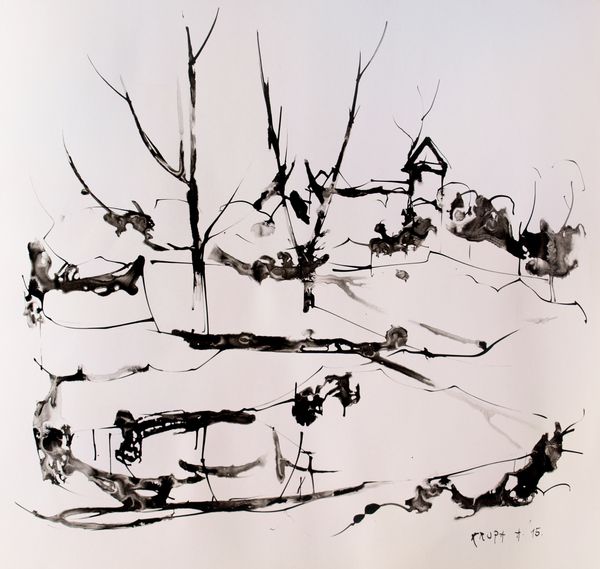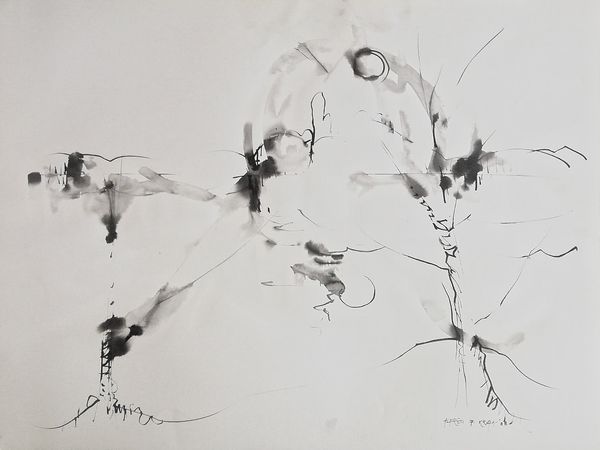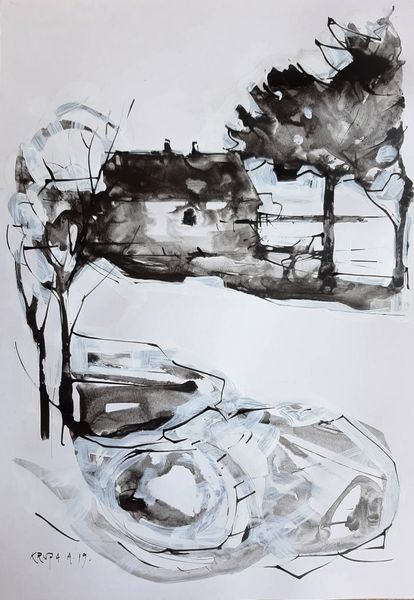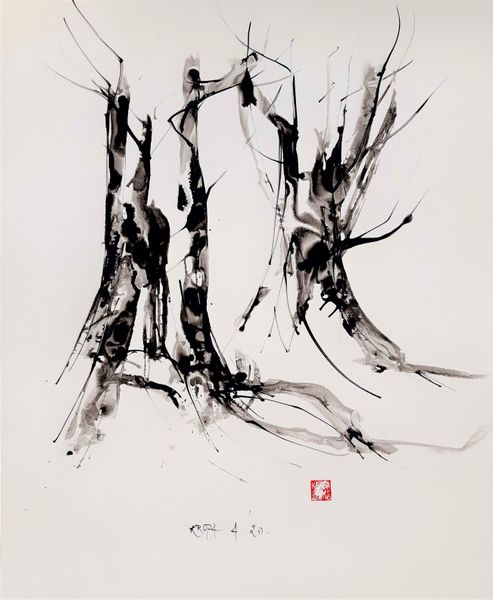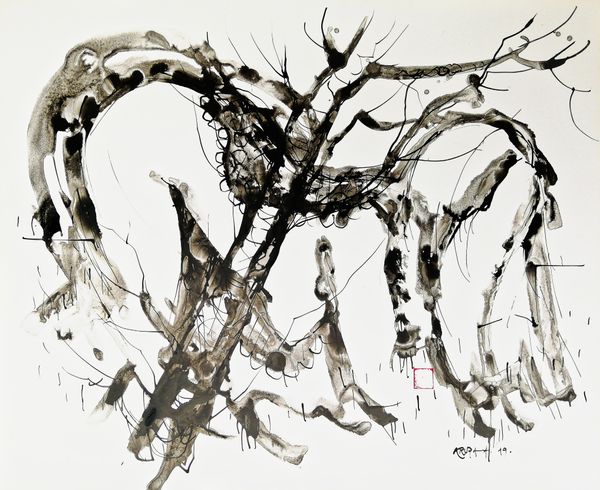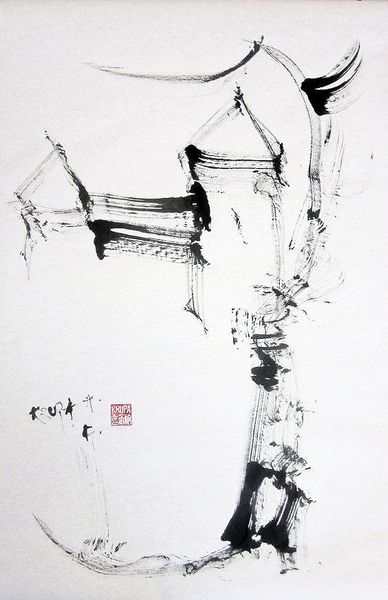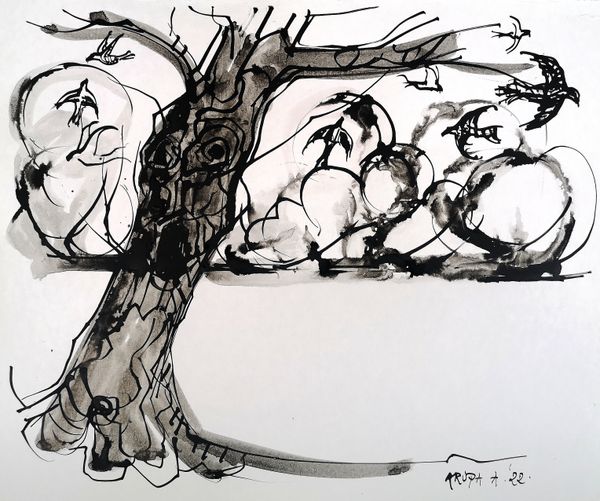
drawing, plein-air, ink
#
drawing
#
contemporary
#
ink drawing
#
ink painting
#
plein-air
#
landscape
#
ink
#
abstraction
Dimensions: 56 x 38 cm
Copyright: Creative Commons NonCommercial
Editor: We're looking at "At Kvaka (Kupa river at Dubovac in Karlovac)," a 2015 ink drawing by Alfred Freddy Krupa. It's a fairly sparse landscape. I find it to be incredibly evocative despite its minimalist nature. What’s your take? Curator: Well, I'm immediately drawn to the relationship between the materials and the depicted subject. The artist uses ink, a readily available and relatively inexpensive medium, to represent the Kupa river. How does the inherent fluidity and mutability of ink reflect, perhaps even comment on, the river's own characteristics, its ever-changing state and crucial position in trade and social interaction? Editor: That’s a compelling perspective. I was mostly caught up in the formal aspects. How do you see the landscape genre functioning here, considering its historical association with upper class patronage and depictions of ownership and national identity? Curator: Exactly! Consider plein-air painting – traditionally associated with capturing light and atmosphere – and its material implications. Krupa created this work in nature. The labour, carrying of the supplies and working in open air. The use of ink on paper democratizes the process to some extent, collapsing traditional boundaries. The labour to source them is also important. What do we know of the context in which this paper and ink were produced and traded? Editor: So you're saying that the choice of a seemingly simple material like ink complicates the genre and its history? Curator: Precisely. It makes us consider not just what is depicted, but how the act of depiction itself is shaped by material conditions and social practices. And the signature seals it-- it is a cultural nod to eastern calligraphy while made using materials readily available for an industrialized consumerist economy. How might that duality inform our reading? Editor: This has completely changed how I see the drawing. I never considered the social implications of the materials themselves. Curator: The means of production always shape the message, don’t they? It highlights the tensions present in so called traditional and post-industrial societies.
Comments
No comments
Be the first to comment and join the conversation on the ultimate creative platform.
